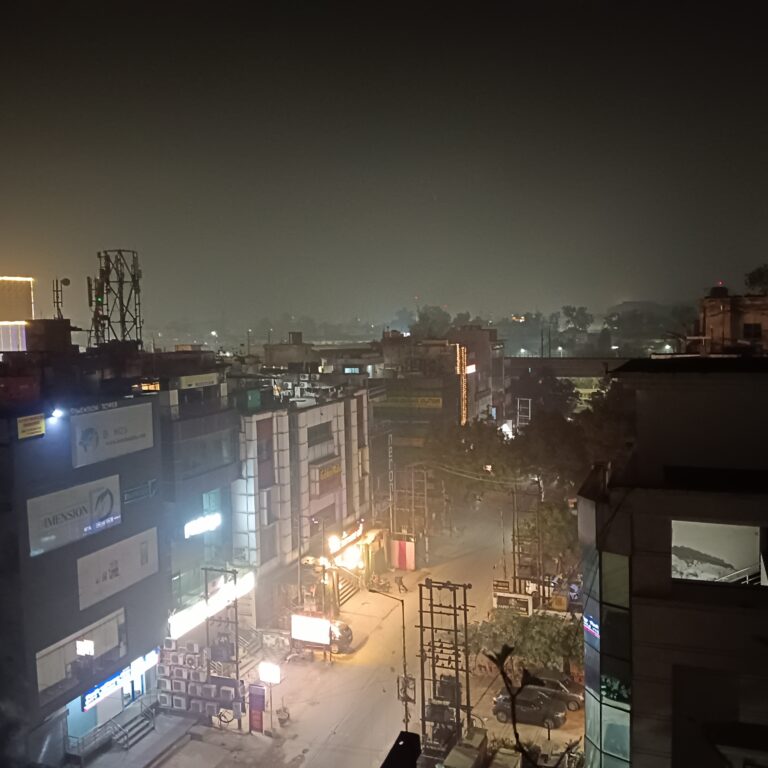
Random Thoughts: Floods and Droughts
 By Kaushal Kishore*
By Kaushal Kishore*
In the season of rain, water logging on the roads is a serious problem every year in the national capital. The three hours shower on Sunday, 19 July had revealed pathetic condition of the city. State administration worked hard to remove the DTC bus along with other vehicles submerged in water. One of the drivers died on the spot, including three others in different areas by drowning. In Uttar Pradesh, the rain damaged roof of the hospital in Bareilly, and patients were bound to suffer. Many other parts of India are submerged. The flood water reached COVID ward of Osmania Hospital. The parts of Kerala and Karnataka are also witnessing flood these days. On the western coast, it’s being reported from certain parts of Maharashtra and Gujarat. Bihar and Assam are the worst hit states so far. At least five million people across fourteen districts of Bihar are inundated. The summer started with cyclone Amphan in the eastern region. Assam is often reported to be flooded since then. Severe damage to life and property is continued in the northeast (Assam and Arunachal Pradesh). The flood prone areas of Madhya Pradesh and West Bengal are also not spared. A series of cloudbursts and landslides in Uttarakhand is yet another reality. The situation is terrible in these regions during the pandemic. It seems like etching in the leprosy.
The government of Bihar is preparing for the assembly election while the people are suffering from heavy rains and floods. The villages and urban areas are flooded since the breakdown of Zamindari dams. The departments of water resources and revenue fought a long battle for maintenance of these dams. At last, Nitish Kumar handed it over to the water resources ministry in 2006. But still the condition is critical. The villages in north and east, once used to be floating, are now doomed to drown. Kosi, Gandak, Bagmati and Kamala are flowing above the danger mark. Across the border, in Nepal, people are bound to face a similar crisis. The region boasts of legends of water conservation associated with the descendants of Janak. Sage Agastya, who was able to absorb the sea, failed to absorb their ponds. In present scenario, it’s clear that people and government have forgotten together the meaning of such legends. The result is also there. Kerala was submerged last year. Today the condition of Mithila is unbearable.
Also read: The dragon is afraid of the truth that deals with Coronavirus
Assam is in a similar condition. The death toll has crossed a hundred with the second wave of flood in the province. The crops in the fields are ruined. Kaziranga National Park is flooded. Consequently, wild animals are migrating towards the hilltop. Flood is a cause of infectious diseases, but this time people afraid of drowning are forced to forget the rules to maintain physical distance or to use the face mask. The state of more than fifty relief camps is deplorable. Across the border development works are also responsible for the rise of the Brahmaputra. China is closely monitoring these circumstances, Indian efforts is negligible in comparison.
Roads, railways and other concrete structures have created obstruction in the flow of water. As a result, the floods often destroy such structures. Today, a number of places have lost contact due to the destruction of roads in the flood. Amazing feats of engineering have created all the more destructive floods. The deforestation in the green belt introduced series of landslides. The rivers change course and villages get swept away due to landslides. Water harvesting and green cover are the only effective method to protect from this disaster. There were miles wide forests on the slope between the hills and plains. The flooding used to be a two-and-half-days affair due to the green belt. As such local people were ready to play with the flood. But in the development era the forest cover got destroyed and further created obstacles in the natural course of flood water. Well-known expert, Dinesh Mishra had suggested the central government to remove the obstacles from the route of the water to control the flood in 2015. After an year, the government accepted its importance but nothing is being done to that effect in last four years.
The real face of development emerges in the metropolis like Mumbai and Delhi during the rainy season. Surgical wastes deposited near COVID centres are being seen to reach into the Yamuna. It has increased the risk of infection. Looking at the condition of drainage system and water management in these cities, it seems that the word Nature is missing from the dictionary of the peers of the development. Technology is the devil between the equation of development and destruction that claims to solve every riddle. But all such claims bring a set of new troubles. The filling of flood plains of the Yamuna with the debris is continued. The tendency to occupy the water bodies of the city and building top towers has crossed all limits. It’s not confined to the metros. People in the remote villages have occupied wells and ponds.
Proponents of development are not able to confine the river within the boundaries of nation-state, however, the modern civilization has accepted its strategic use. The ritual to offer salutations to the water has become a relic of the archaic tradition. The rivers originating from Tibet irrigate many Asian countries. The rivers of Nepal supply water to Bihar and Bengal. The rivers of northern and eastern region of India flow into Bangladesh and known as the cause of massive destruction. Today the condition of Bangladesh due to the flood is critical. People in Bhutan, Pakistan and China are also plagued with heavy rains and flood these days. At least a thousand people have died in the Asian countries. The figure of missing people is not included in it.
The flood infested regions also face drought in absence of sufficient shower. The role of local people dealing with these situations is now replaced with the government institutions, however, they are compelled to face the difficulties. The old tradition to avoid the drought by conserving flood waters is receding. The shining of modernity has changed the public perception about the boons of flood i.e. fertile soil for better crop and freshwater. Now the day is not far when one won’t believe that farmers used to wait for floods.
*The writer is a social activist and author of The Holy Ganga (Rupa, 2008), Managing Editor of Panchayat Sandesh, and his column Across The Lines appears in the vernacular publications.





